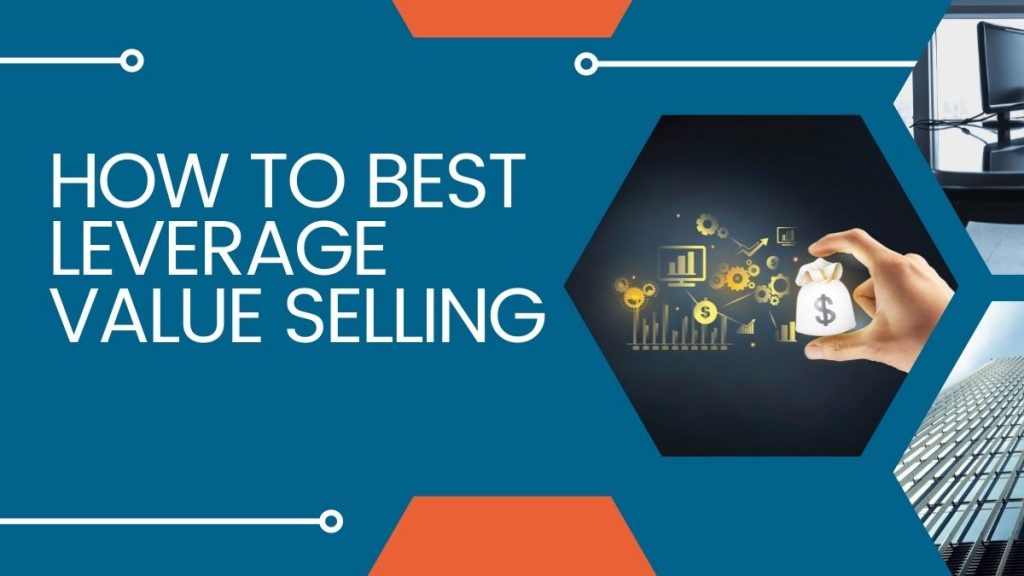
How is value different from price? The price is what is written on the price tag and what you will pay for the item. The value, however, is something that cannot be measured in money and is different for everyone. The value is the benefits that you expect to get from owning the item you bought.
People don’t buy things just for the sake of buying. Rather, they buy things to enjoy using them. Even if it is something impractical, like a pretty picture frame or Christmas decoration, it is bought for a purpose – to please your eye and create a good mood. This is what value-based selling is about – to focus on what the product will bring to the buyer instead of on how much they are going to pay for it.
Why sell value?
By placing the emphasis on the product value rather than price, you have a better chance to sell more. If the customer does not see the value in owning your product, they will never buy it, no matter how low you may price it.
Today, when customers have virtually unrestricted access to all sorts of information on the products and brands, they come to you already armed with the knowledge they gained from browsing the market. They have looked up your competitors, read customer reviews, compared similar offerings, and already have a certain vision about the “perfect” product they need. It’s up to you to convince them that once they come to you, they should look no further.
In selling your product, focus on how the customer is going to use it. When they see how this particular item is going to create positive experiences, the price takes a back seat. You need to show the customer how they can succeed with your product – that’s what value selling is about.
How to sell value
Here are a couple of techniques that you can use in your physical or virtual selling to highlight your product value and increase your sales.
Identify the pain points of your target audience
In other words, learn who your potential customers are and which problems they are seeking to resolve with your product. This is a two-step task – first, you need to define your target audience, and then to see their pain points.
You need to start with the assumption that your product or service is not for everyone out there. Then, the question is – who is it for? Students or office staff? Millennials or zoomers? People, who prefer eating out or cooking at home? Do they take domestic or overseas vacations? Well, you get the idea.
From there, you can proceed to find the most common pain points. Is it, maybe, difficult for home cooks to get organic products delivered? Are subscription plans inconvenient? Can it be that customers do not like their support experience because it is not human enough?
Highlight your product benefits that address customers’ pain points
Once you have figured out your prospective customers’ pain points, you can proceed further. Armed with this knowledge, you will be able to see how your product fits in. Does it already resolve some of the problems that customers are struggling with when using your competitors’ products? Or does your product need a bit of adjustment to provide that missing piece of the jigsaw?
In any case, you need to put your strengths in the limelight and focus your marketing efforts on showing how you can fill the gaps in the existing customer experiences.
- Do customers complain that a 12-month subscription is too long? Offer a more flexible subscription system with 6-month and 9-month plans and advertise it.
- Are customers concerned about chatbots preventing any human communication with the support team? Implement multiple communication channels together with effective marketing automation software to ensure proper support.
- Is the product inconvenient to use? Make sure that you can offer greater convenience and showcase it.
Addressing the most common pain points allows showing the value of your product or service that gets to be more important than its price.

Analyze the competition
Value selling opportunities may come not only from analyzing customers’ feedback and experience but also from researching the market. See if you can identify any gaps in your competitors’ value offerings that you can fill.
At the same time, during your research, you may see where your competitors achieve success and try to implement similar tactics. And if you manage to complement their strong points with your own filling the gaps in their value proposition, that is going to be a win-win combination.
For example, you may find that your competitors, with all their attractive prices and product lines, lack clear onboarding. Customers struggle with getting started with the product. You can create additional value here by introducing an easy onboarding flow which may include video calls to create the best experiences.
Educate rather than sell
Make your sales pitch look anything but a sales pitch. Instead, show your prospects what your product can do and what value it can bring them. Show how it can help them in various use cases, discuss their specific needs, improvise, and try not to sell immediately. This way, you start with building trust, which can bring enormous benefits.
Even if your prospect does not become your customer now, they will surely remember the opportunities they can get with your product and may come back to you later. However, to achieve maximum effect, think through your educational content to make sure that it allows the user to get acquainted with your product and see its strengths. A good practice is to offer a demo or free trial to allow customers to get to know your product better.
You can highlight your product values even outside your customer communication. Place engaging educational content on your website – tutorials, use cases, eBooks, customer testimonials – to let customers browse it at their pace.
Take a personalized approach to customers
Within the context of building trust and confidence, a personalized approach is hard to overestimate. By adopting the model of treating each customer as an individual and tailoring your sales pitch accordingly, you are going to accomplish much more than with a standard sales talk.
In talking to customers, try to show them how your product brings value to them and resolves their unique pain points. To trust you enough to commit to a purchase, the customer needs to be confident that they are purchasing something they will enjoy. Of course, it takes some preliminary research to find out what resonates with the particular customer and what they expect from a product like yours.
Follow the same line all your customer communications. If you hold offline or online meetings with the customer, create personalized meeting minutes reflecting the specific issues that were discussed. If you use email marketing, try to include personalization in your email subject lines.
Offer more than just a product
Before making the purchase, your customers need to know that they will not be left alone in case of any troubles with your product. When you close the deal, it is not the end of your relationship. In fact, it’s just the beginning.
To inspire confidence in their purchase decision, focus not only on the properties of your product or service and the benefits it is going to bring but also on the after-sales support. Describe all the communication channels available to customers and also point out self-service resources, such as a knowledge base, FAQs, video tutorials.
Quality support adds significant value to the product and can be an important factor in the decision-making process. As the saying goes, the quality of a business is best seen when something is not right. Therefore, if you are set to sell value, ensure that you offer top-notch customer support, too. For example, utilizing ePayables to streamline accounts payable processes can improve financial control, provide valuable insights through integration and analytics, enhance after-sales support, and demonstrate commitment to customer satisfaction.
Value selling can increase your total sales
In sales, not everything is about money alone. Of course, your prices should be balanced and reasonable, but often, the price is not the primary factor in the customer’s purchase decision. This is why selling your product value can bring much greater benefits than trying to compete in the price.
When you sell value, you are getting truly loyal customers who recognize and appreciate the positive experience they get from using your product. Such loyal customers will bring you much more than just the amount of their invoice. They will come back for renewals or repeat purchases and bring other customers by word-of-mouth advertising. So, sell the value!




Leave a Reply
You must be logged in to post a comment.